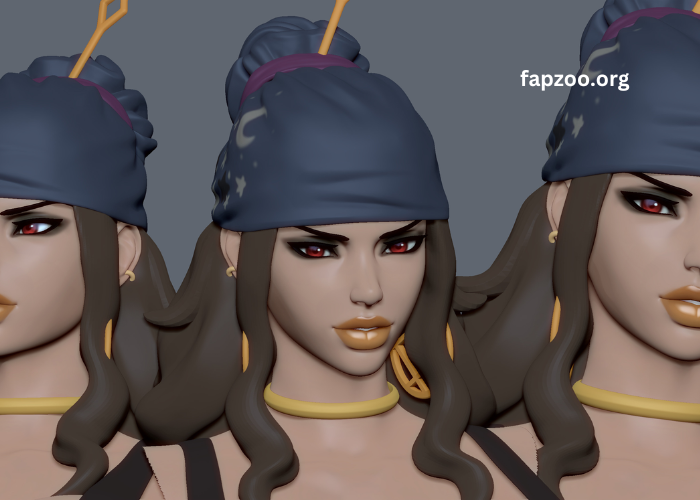Lifestyle design is more than just a trend or buzzword; it’s a powerful philosophy for taking control of your life and intentionally creating the life you want to live. It’s about making choices that align with your values, passions, and goals, ultimately allowing you to build a life that feels both fulfilling and meaningful. Whether you’re looking for more freedom, creativity, balance, or success, lifestyle design can help you carve out a path to achieve it. In this article, we’ll explore what lifestyle design is, why it matters, and how to create your perfect life using a strategic, step-by-step approach.
What is Lifestyle Design?
The Concept of Lifestyle Design
Lifestyle design is the practice of consciously crafting a life that aligns with your personal values and desires, rather than simply living on autopilot or following societal expectations. It involves being intentional about how you spend your time, where you focus your energy, and what habits you cultivate.
This approach is rooted in the idea that your lifestyle doesn’t have to be dictated by external forces, but rather can be shaped by your decisions. Whether it’s your career, daily routine, health, relationships, or hobbies, you have the power to design your life in a way that makes you feel satisfied, fulfilled, and energized.
Why is Lifestyle Design Important?
Many people go through life without giving much thought to how they want to live, simply reacting to external pressures or circumstances. However, this can lead to feelings of dissatisfaction, burnout, or regret, especially when the life you’re living doesn’t align with your inner desires and goals. Lifestyle design provides a way to actively choose how you want to live and align your actions with your deeper values.
By intentionally designing your lifestyle, you can experience greater happiness, better work-life balance, more financial independence, and a sense of purpose. It allows you to define success on your own terms, rather than adhering to external standards or societal expectations.
Steps to Design Your Perfect Life
1. Define Your Values and Priorities
The first step in lifestyle design is understanding what truly matters to you. This means reflecting on your core values, passions, and the things you want to prioritize in your life. Whether it’s personal growth, family, health, creativity, or career success, identifying your core values will serve as the foundation for the life you’re trying to create.
Ask yourself questions like:
- What do I enjoy doing the most?
- What makes me feel fulfilled and happy?
- What kind of legacy do I want to leave?
- How do I define success?
By identifying your values, you gain clarity on what to prioritize and what changes need to be made in your life. This helps you design a lifestyle that truly supports your deepest needs.
2. Assess Your Current Situation
Before making significant changes, it’s essential to take a good look at your current lifestyle and situation. Conduct an honest self-assessment to determine where you stand in terms of your career, relationships, health, and personal fulfillment. This will provide a baseline from which you can work to improve.
Consider the following:
- Are you happy with your current career or business?
- How are your relationships (family, friends, romantic)?
- What is your health and wellness like?
- Do you feel financially secure?
- Are you satisfied with your work-life balance?
By understanding where you are, you’ll gain insights into areas that need improvement or change in order to align with your desired lifestyle.
3. Set Clear, Achievable Goals
Once you’ve clarified your values and assessed your current situation, it’s time to set specific goals that will guide your lifestyle design process. Your goals should be both aspirational and practical, pushing you toward growth but also achievable within a reasonable time frame.
Start by setting both short-term and long-term goals across different areas of your life, including:
- Career/Business: What milestones would you like to achieve in your work or business over the next year? Five years?
- Health and Wellness: Do you want to adopt healthier habits, lose weight, or improve your fitness levels?
- Relationships: Are there specific relationships you want to strengthen or new connections you want to make?
- Personal Development: Are there new skills, hobbies, or interests you want to pursue?
- Financial Freedom: Do you want to save more, invest, or achieve a specific financial milestone?
By setting clear, measurable goals, you’ll create a roadmap for building the life you want and ensure you stay on track.
4. Design Your Daily Routine
Your daily routine plays a critical role in shaping your life. It’s through your habits and rituals that you make progress toward your goals and live a balanced life. As part of your lifestyle design, take the time to create a daily routine that supports your values and helps you move toward your larger goals.
Think about:
- How you start your day (morning habits and rituals)
- Your work schedule (how you manage your time and energy at work)
- How you take care of your body (exercise, nutrition, rest)
- How you relax and recharge (mental health practices, hobbies, downtime)
- How you spend time with loved ones (quality time with family and friends)
A well-designed daily routine can improve your productivity, enhance your well-being, and create a sense of satisfaction as you make consistent progress toward your goals.
5. Embrace Minimalism and Simplify Your Life
One key aspect of lifestyle design is the concept of minimalism — reducing distractions, possessions, and commitments that don’t add value to your life. Embracing minimalism can help you focus on what truly matters, eliminate stress, and create space for the things that bring you joy.
To simplify your life:
- Declutter your home and workspaces, getting rid of items that don’t serve a purpose or bring you joy.
- Evaluate your commitments and let go of obligations that no longer align with your values or goals.
- Streamline your financial situation by reducing unnecessary expenses and focusing on your financial priorities.
By cutting out the noise, you create more room for what’s important and meaningful, allowing you to design a life that reflects your true desires.
6. Build a Supportive Environment
The people you surround yourself with can greatly impact your ability to design your ideal lifestyle. Building a supportive environment includes cultivating relationships with people who inspire, motivate, and support you in achieving your goals. This might mean seeking out mentors, connecting with like-minded individuals, or cutting ties with toxic relationships.
Additionally, consider your physical environment. Your home, workspace, and even the places you frequent can influence your mood, productivity, and overall happiness. Aim to create spaces that are conducive to your personal growth, creativity, and well-being.
7. Take Calculated Risks and Embrace Change
Lifestyle design often requires stepping out of your comfort zone and making bold decisions. Whether it’s changing careers, starting a new business, or relocating to a new city, embracing change and taking calculated risks can open up new opportunities and accelerate your progress toward your desired life.
Taking risks doesn’t mean being reckless, but rather making informed decisions that align with your long-term vision. The willingness to embrace uncertainty and change is often what separates those who simply dream about their ideal life from those who actually create it.
8. Continuously Reflect and Adapt
As you work toward your perfect life, it’s essential to regularly reflect on your progress and make adjustments as needed. Lifestyle design is a dynamic, ongoing process, and your goals, values, and priorities may shift over time.
Take time to assess how you’re doing periodically, whether that’s through journaling, self-reflection, or having regular check-ins with yourself. If something isn’t working or feels out of alignment, make the necessary changes to get back on track.
Conclusion: Design the Life You Desire
Lifestyle design is about taking ownership of your life and intentionally crafting it in a way that reflects who you are and what you want to achieve. By defining your values, setting clear goals, designing your daily routine, and embracing change, you can create a life that aligns with your deepest desires and brings you lasting fulfillment.
While the process of designing your perfect life takes time, effort, and introspection, the results are well worth it. A life that is aligned with your true self will bring you more happiness, freedom, and purpose — and that’s the ultimate goal of lifestyle design.



